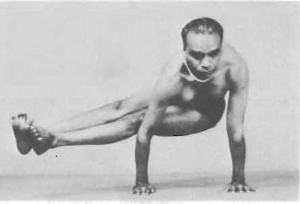Since the end of January, my wife and I have been taking our dog to obedience classes at a local American Kennel Club program. Evidently there are a lot of schools of thought when it comes to dog training. Some trainings use treats as positive reinforcement. The school that my wife and I joined uses verbal commands only (sound familiar?)
Puppy training reminds me a lot of my days as a teacher training apprentice. With unruly pups you have to use a loud voice and clear commands. As I have a gentle nature, this doesn’t come naturally to me (as it hasn’t for all my years teaching yoga). As a result, our dog isn’t quite at the top of her class. That is okay with my wife and I as we want her to enjoy her puppyhood.

One day before class we took her early to run her so she wouldn’t have so much energy during class. We unleashed her and threw a tennis ball on the field. Instead of bringing the ball back, she ran right past us and toward the trainers who were just arriving. The trainers had to restrain the dog until we could catch up to her. My wife and I were duly scolded. “You have to keep your dog on a leash or else something really bad can happen,” the trainers barked. My wife and I silently nodded in shame.
We are not trying to win the Westminster Dog Show with our dog Kinako, we simply want her to stay when she needs to stay, come when she needs to come, and sit when she needs to sit. That is a lot to ask from a six month old puppy.
Our dog doesn’t always sit, but found out by studying us how to open the unlocked sliding screen door. I often joke that she is training us instead of the other way around. She is quite intelligent.
As puppy classes are held late on Wednesday nights, and I teach yoga early Thursday mornings, I have caught myself bluring the two together. The other day in yoga class I asked students to get straps and was amazed at how everyone simply got up and got their prop with one instruction. Realizing I was no longer trying to train a puppy, I had to switch back into my yoga teacher role and demo the pose. I also have to watch myself when someone is doing a correct instruction not to praise them lavishly like I do in puppy classes. I end up praising them anyway.
The dog is a reflection of their owner. Our half obedient pup is a reflection of my training her. But her bubbly Golden Retriever personality has not been blunted in the process. She has a playful side that I don’t every want her to lose. Perhaps accepting your dog as a dog with all its dog flaws is the greatest love you can give.













